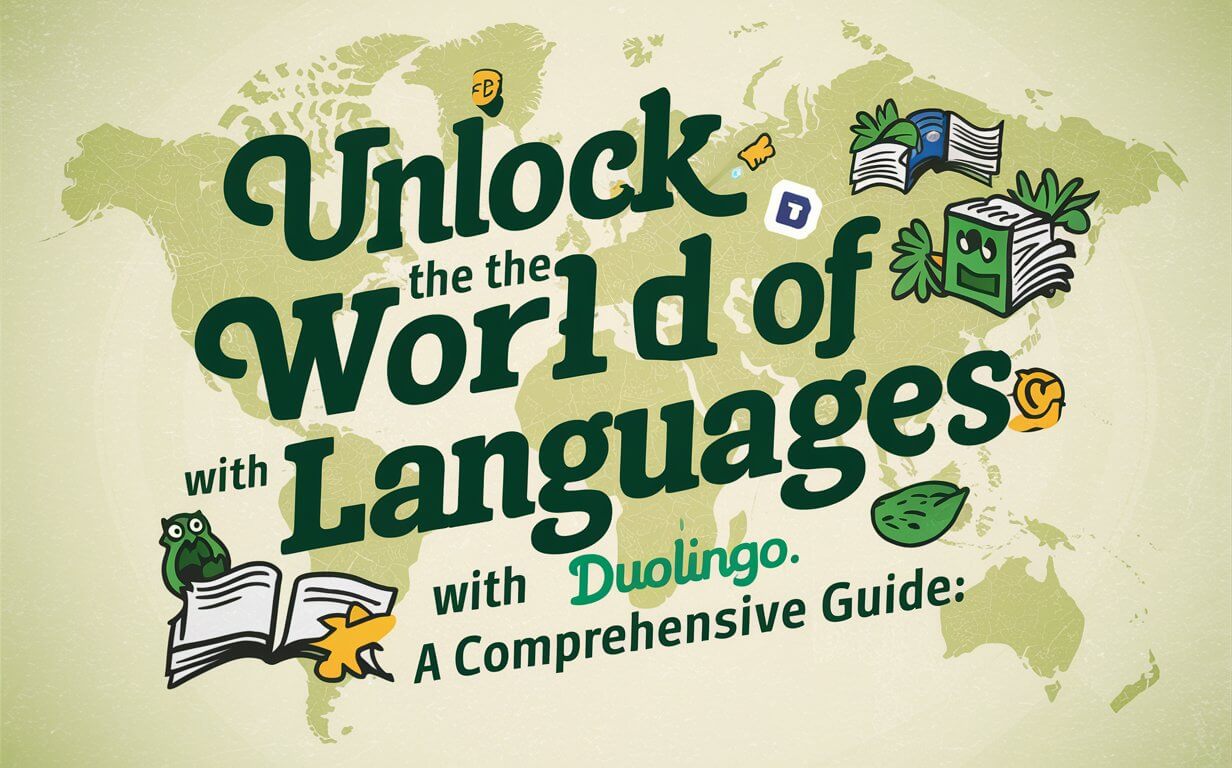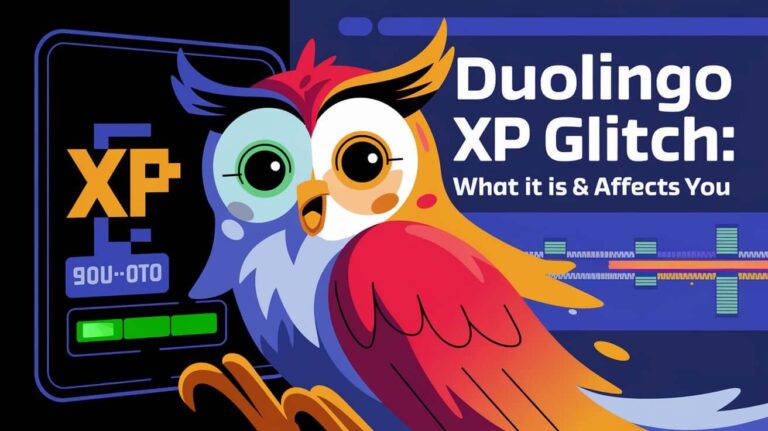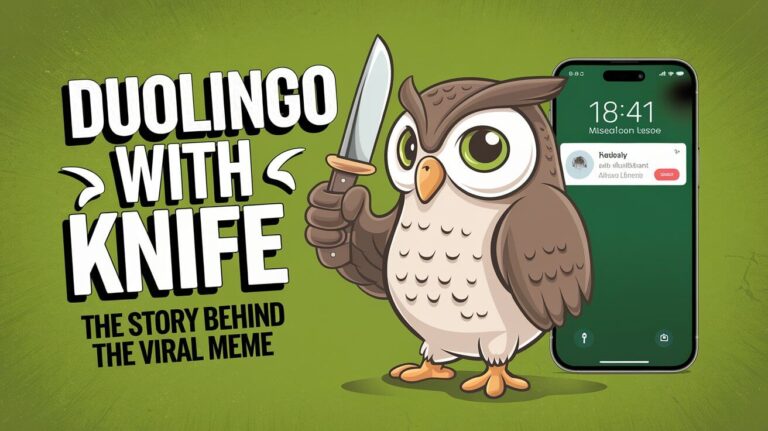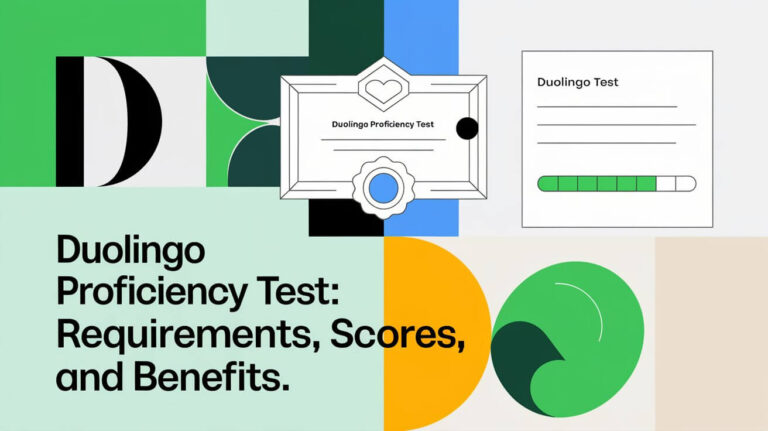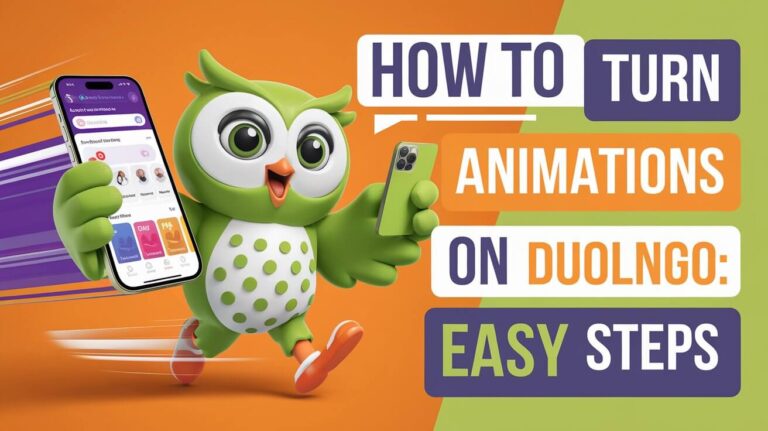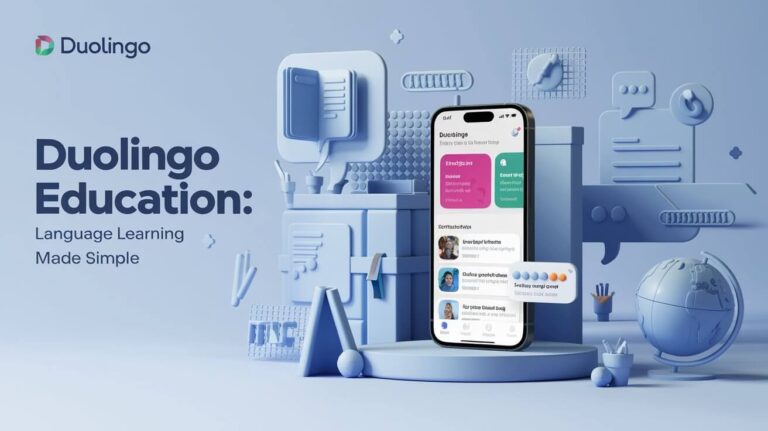Duolingo is a popular language learning app that offers courses in many languages, from common ones like Spanish and French to unique options like Klingon and High Valyrian. It’s a great tool to start learning a language and keep your skills sharp, but you’ll likely need other resources to become fluent.
In this guide, we’ll explore Duolingo’s features, languages, and how well it works for learning. We’ll cover everything you need to know, from getting started to making the most of the app’s fun and game-like style.
What is Duolingo?
Duolingo is a free language learning platform that has revolutionized the way people approach language acquisition. Launched in 2011, the app has gained immense popularity, boasting over 500 million registered users worldwide. Its mission is to make language education accessible, engaging, and enjoyable for everyone.
At its core, Duolingo employs a gamified approach to language learning. Users progress through a series of lessons, earning points, maintaining streaks, and unlocking achievements along the way. This gamification aspect not only makes the learning process more fun but also helps to keep learners motivated and engaged.
Languages Offered by Duolingo
One of the standout features of Duolingo is its impressive array of language courses. For English speakers, the app currently offers a staggering 40 different language options, catering to a wide range of interests and backgrounds.
Top Languages by Number of Learners
According to the latest statistics from May 2024, the top eight languages on Duolingo by the number of learners are:
| No. | Languages |
| 1 | English |
| 2 | Spanish |
| 3 | French |
| 4 | German |
| 5 | Japanese |
| 6 | Italian |
| 7 | Korean |
| 8 | Portuguese |
Most Comprehensive Courses
While the number of learners is an important metric, Duolingo also excels in providing comprehensive language courses. The top three courses in terms of the number of words taught are:
- Spanish: With an impressive 5,256 words across 213 units, the Spanish course on Duolingo is one of the most comprehensive, providing learners with a solid foundation in the language.
- French: The French course follows closely behind, offering 4,883 words across 201 units, ensuring a thorough understanding of the language’s intricacies.
- German: With 3,583 words taught across 113 units, the German course on Duolingo provides a robust introduction to this widely spoken language.
Unique Offerings: Fictional Languages and Conlangs
One of the most intriguing aspects of Duolingo’s language offerings is its inclusion of fictional languages and constructed languages (conlangs). These unique courses cater to specific interests and passions, making language learning even more engaging and diverse.
Fictional Languages
Duolingo offers courses in two popular fictional languages:
- Klingon: Developed for the Star Trek universe, Klingon has gained a dedicated following among science fiction enthusiasts. The Klingon course on Duolingo provides an introduction to this unique language.
- High Valyrian: Inspired by the Game of Thrones/House of the Dragon series, High Valyrian is a constructed language that has captured the imagination of fantasy fans worldwide. Duolingo’s High Valyrian course offers a glimpse into this captivating world.
Constructed Languages (Conlangs)
Duolingo’s Conlang offering is the widely recognized Esperanto language. Developed in the late 19th century as a universal language, Esperanto has gained global recognition and a dedicated community of speakers. The Esperanto course on Duolingo takes learners to approximately an A2 level, providing a solid foundation in this constructed language.
Language Learning from Non-English Base
While Duolingo’s language courses are primarily geared toward English speakers, the platform also offers the opportunity to learn languages from various other base languages. This feature caters to learners who may be more comfortable starting their language journey in their native tongue.
Some examples of languages that can be learned from non-English bases include:
- English: Learners can access English courses from bases such as Arabic, Chinese Mandarin, French, German, Italian, Japanese, Korean, Portuguese, Russian, and Spanish, among others.
- Catalan and Guarani: These languages are available for Spanish speakers on Duolingo.
- Cantonese: For Mandarin Chinese speakers, Duolingo offers a course in Cantonese.
Learning English with Duolingo
Given the global demand for English language proficiency, Duolingo has focused significant efforts on its English courses. The platform currently offers English courses for speakers of over 25 different languages, including Arabic, Bengali, Chinese Mandarin, Czech, Dutch, French, German, Greek, Hindi, Hungarian, Indonesian, Italian, Japanese, Korean, Polish, Portuguese, Romanian, Russian, Spanish, Tagalog, Telugu, Thai, Turkish, Ukrainian, and Vietnamese.
The quality and depth of these English courses vary depending on the base language. For instance, the English course from Spanish teaches up to a B2 level, covering 4,552 words across 221 topical units. In contrast, the course French is not yet aligned with the Common European Framework of Reference (CEFR) and teaches only 1,180 words across 41 units.
Duolingo’s strong focus on English language education is further emphasized by its English assessment tool, which is currently accepted by more than 4,600 universities worldwide and can be used to support student visa applications to Ireland.
How Effective is Duolingo for Language Learning?
While Duolingo has gained immense popularity as a language learning tool, opinions on its effectiveness vary. Some users praise the app for providing a solid foundation and helping them maintain their language skills through regular practice. Others, however, argue that Duolingo alone is not sufficient for achieving fluency.
Strengths of Duolingo
- Accessibility: Duolingo is free and available on multiple platforms, making language learning accessible to a wide audience.
- Gamification: The app’s gamified approach, with points, streaks, and achievements, helps to keep learners motivated and engaged.
- Bite-sized lessons: The bite-sized lessons are convenient for learners with busy schedules, allowing them to practice regularly in short bursts.
- Variety of languages: With its extensive language offerings, including unique options like Klingon and High Valyrian, Duolingo caters to diverse interests and passions.
Limitations of Duolingo
- Limited speaking practice: While Duolingo focuses on reading, writing, and listening comprehension, it lacks robust speaking practice, which is crucial for developing fluency.
- Lack of context: The app’s lessons can sometimes feel disconnected from real-world situations, making it challenging to apply the learned language in practical contexts.
- Repetitive exercises: Some users find the exercises repetitive, which can lead to boredom or complacency over time.
- Lack of depth: While Duolingo provides a good starting point, achieving advanced proficiency typically requires supplementing the app with additional resources and immersive practice.
To maximize the benefits of Duolingo, it’s generally recommended to supplement the app with language courses, practice with native speakers, and immerse yourself in the target language through various media and real-life situations.
Getting Started with Duolingo
Getting started with Duolingo is a straightforward process. Here’s a quick overview of the steps involved:
- Create an account: Visit the Duolingo website or download the app for your preferred platform (iOS, Android, or web). Sign up for a free account by providing your email address or connecting with a social media account.
- Select your course: Choose the language you want to learn and your base language (the language you’re fluent in). Duolingo will then present you with the appropriate course for your language goals.
- Familiarize yourself with the interface: Duolingo’s interface is designed to be user-friendly and intuitive. Take some time to explore the different sections, such as the lesson path, practice hub, and progress tracker.
- Set your goals: Duolingo allows you to set daily goals for practice time or experience points (XP) earned. Setting realistic goals can help you stay motivated and consistent with your language learning journey.
- Start learning: Dive into the lessons and begin your language adventure! Duolingo’s lessons are divided into bite-sized units, making it easy to fit practice sessions into your daily routine.
Making the Most of Duolingo’s Features
To maximize your learning experience on Duolingo, it’s essential to take advantage of the various features the app offers:
- Lessons: The core of Duolingo’s language learning experience lies in its interactive lessons. These lessons cover a wide range of topics and gradually increase in difficulty, helping you build a solid foundation in your target language.
- Practice Hub: The Practice Hub allows you to review and reinforce the concepts you’ve learned. Here, you can practice specific skills, complete timed challenges, and review words and phrases.
- Stories: For select languages, Duolingo offers interactive stories that immerse you in real-world scenarios and conversations. This feature helps bridge the gap between learning and practical application.
- Clubs and Leaderboards: Duolingo’s social features, such as clubs and leaderboards, foster a sense of community and friendly competition, keeping you motivated and engaged.
- Events and Challenges: Regularly hosted events and challenges add an element of excitement and variety to your language learning journey, encouraging you to stay consistent and push your limits.
By actively engaging with these features, you can create a well-rounded and enjoyable language learning experience on Duolingo.
Duolingo’s Language Learning Approach
Duolingo’s approach to language learning is centered around three core principles: gamification, motivation, and user engagement.
Gamification and Motivation Techniques
Gamification is at the heart of Duolingo’s success. The app employs various game-like elements to make language learning more engaging and enjoyable. From earning experience points (XP) and maintaining daily streaks to unlocking achievements and leveling up, these gamification techniques tap into our innate desire for progress, competition, and reward.
Moreover, Duolingo’s use of motivational techniques, such as positive reinforcement and encouraging messages, helps to keep learners motivated and focused on their language goals. The app’s friendly and supportive tone creates a positive learning environment, fostering a sense of accomplishment and encouraging users to continue their language journey.
Lesson Structure and Content
Duolingo’s lessons are carefully structured to provide a progressive and comprehensive learning experience. Each lesson focuses on specific language skills, such as vocabulary, grammar, reading comprehension, or listening comprehension, and builds upon the knowledge acquired in previous lessons.
The content is presented interactively and engagingly, using a variety of exercises and activities. From matching words to translating sentences and completing fill-in-the-blank exercises, Duolingo’s lessons keep learners actively involved and reinforce the concepts being taught.
User Engagement and Community
One of the standout features of Duolingo is its emphasis on user engagement and community. The app encourages learners to interact with one another through features like clubs, leaderboards, and forums.
Clubs allow users to join groups based on interests, locations, or language goals, fostering a sense of community and providing opportunities for language practice and collaboration. Leaderboards add a fun element of friendly competition, motivating users to strive for higher ranks and longer streaks.
Duolingo’s forums allow learners to ask questions, share tips, and connect with others learning the same language.
Aligning with Language Proficiency Standards (CEFR)
As Duolingo continues to evolve, the platform is making strides in aligning its language courses with internationally recognized proficiency standards, such as the Common European Framework of Reference (CEFR). This alignment aims to provide learners with a clear understanding of their progress and the level of proficiency they can achieve with each Duolingo course.
By mapping the course content and learning objectives to the CEFR levels, Duolingo users can set realistic goals and track their language acquisition in a more structured manner. This alignment also facilitates seamless integration with educational institutions and language certification programs, further enhancing the app’s credibility and utility.
Duolingo for Schools and Educational Purposes
Duolingo has expanded to educational settings, partnering with schools and institutions to support language learning.
Duolingo’s Schools Program
Duolingo’s Schools Program is a dedicated offering that allows teachers and educators to integrate the app into their language curricula. Through this program, teachers can monitor their students’ progress, assign homework, and track engagement metrics.
The program also provides access to specialized classroom tools and resources, such as lesson plans, quizzes, and supplementary materials. By leveraging the engaging and gamified approach of Duolingo, educators can create a more interactive and motivating language learning environment for their students.
English Assessment and University Acceptance
Recognizing the global demand for English language proficiency, Duolingo has developed an English assessment tool specifically designed for academic and professional purposes. This assessment is currently accepted by more than 4,600 universities worldwide, allowing students to demonstrate their English language skills as part of their university applications or for student visa purposes.
The assessment’s online format and accessibility have made it particularly valuable during periods of widespread remote learning, such as during the COVID-19 pandemic. By providing a reliable and convenient English proficiency evaluation, Duolingo has opened doors for students and professionals seeking educational or career opportunities abroad.
The Future of Duolingo Languages
As Duolingo continues to grow and adapt to the evolving needs of language learners, the platform’s language offerings and features are constantly evolving. While the company has not made any recent announcements regarding new language courses, it seems focused on consolidating and enhancing its existing offerings.
Upcoming Language Courses and Updates
One language course that has been in development for some time is Xhosa, a Bantu language spoken primarily in South Africa. As of May 2024, the Xhosa course is listed as “hatching” on Duolingo’s official language list, indicating that it is in the early stages of development.
Additionally, languages like Māori and Tamil were previously in the early stages of development but have not received any updates or launch dates from Duolingo. It remains to be seen whether these languages will be added to the platform in the future.
Duolingo’s Language Expansion Plans
While Duolingo has not revealed specific plans for expanding its language offerings, the company has consistently demonstrated a commitment to diversity and inclusivity. As the platform’s user base continues to grow globally, Duolingo will likely explore adding languages that cater to underrepresented communities or emerging markets.
Duolingo may add new features like virtual or augmented reality to make learning more immersive and practical.
How to Request a New Language on Duolingo
If you’re passionate about a language that is not currently offered on Duolingo, you can submit a request for a new course. Here’s how:
- Access the language request form: Visit the Duolingo website and navigate to the “Language Courses” section, where you should find a link or button to request a new language.
- Fill out the form: Provide details about the language you’re requesting, including its name, language family, and any relevant information about its speakers or cultural significance.
- Explain your interest: Share your reasons for wanting to learn this language, whether it’s for cultural exploration, professional development, or personal growth.
- Submit your request: Once you’ve completed the form, submit your request, and Duolingo will review it along with other language requests from the community.
Duolingo considers popular demand when deciding on new courses.
In conclusion,
Duolingo has established itself as a powerful and accessible language learning platform, offering a diverse range of language courses to cater to various interests and backgrounds. From popular languages like Spanish and French to unique offerings like Klingon and High Valyrian, Duolingo’s language offerings are a testament to its commitment to making language education engaging and inclusive.
While the app provides an excellent foundation and helps maintain language skills, achieving true fluency often requires supplementing Duolingo with additional resources, such as language courses, immersive practice, and interactions with native speakers. By combining Duolingo’s gamified approach with these complementary methods, language learners can unlock a more comprehensive and effective language learning experience.
As Duolingo continues to evolve and expand its offerings, the future looks promising for language enthusiasts around the world. With a strong focus on accessibility, user engagement, and alignment with language proficiency standards, the platform is well-positioned to remain a leader in the language learning space.
Whether you’re a student, a professional, or simply someone with a passion for languages, Duolingo’s diverse range of courses and features provides an excellent starting point for your language-learning journey. So why not explore the world of languages with Duolingo and unlock a new realm of personal and professional growth?

